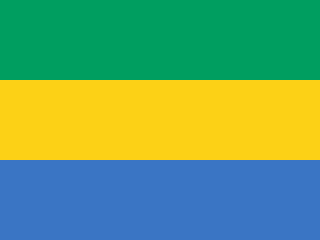
Gabon, officially the Gabonese Republic, is a country on the west coast of Central Africa. Located on the equator, Gabon is bordered by Equatorial Guinea to the northwest, Cameroon to the north, the Republic of the Congo on the east and south, and the Gulf of Guinea to the west. It has an area of nearly 270,000 square kilometres (100,000 sq mi) and its population is estimated at 2.1 million people. There are three distinct regions: the coastal plains, the mountains, and the savanna in the east. Gabon's capital and largest city is Libreville. The official language is French.
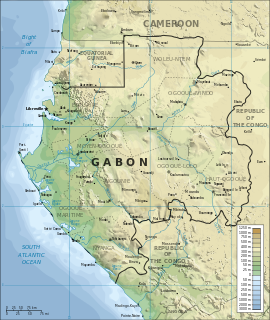
Gabon is a country in Central Africa, lying along the Atlantic Ocean, just south of the Bight of Biafra.

The Armed Forces of Gabon or the Gabonese Defense and Security Forces is the national professional military of the Republic of Gabon, divided into the Army, Air Force, Navy, and a National Gendarmerie, consisting of about 5,000 personnel. The armed forces includes a well-trained, well-equipped 1,800-member guard that provides security for the President of Gabon.
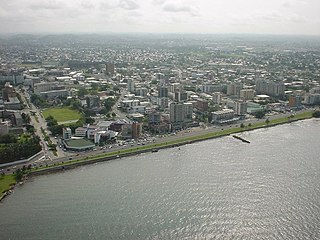
Libreville is the capital and largest city of Gabon. Occupying 65 square kilometres (25 sq mi) in the northwestern province of Estuaire, Libreville is a port on the Komo River, near the Gulf of Guinea. As of the 2013 census, its population was 703,904.

Pemba is a port city and district in Mozambique. It is the capital of the province of Cabo Delgado and lies on a peninsula in Pemba Bay.

Mouila is the capital of the Ngounié region of Gabon. It lies on the Ngounié River and the N1 road and has a population of about 20,000 people. Its main sight is Lac Bleu, a lake known for its bright blue water.

Franceville is one of the four largest cities in Gabon, with a population of 110,568 at the 2013 census. It lies on the River Mpassa and at the end of the Trans-Gabon Railway and the N3 road. It grew from a village named Masuku when Pierre Savorgnan de Brazza chose it to resettle former slaves and renamed it Francheville in 1880. The city later came to be called Franceville.

Mayumba is a Vili- and Shira-speaking town of about 5,208 people on the Atlantic Ocean coast of Gabon, at the end of the N6 road, lying on a peninsula separated from the mainland by the Banio Lagoon.

Garanhuns is a city in the Brazilian state of Pernambuco. Located in the Borborema Plateau, the town is known as the "Suíça Pernambucana" due to its elevation and relatively cool climate. It is also known as "Cidade das Flores" or "Cidade da Garoa".

Loango National Park is a national park in western Gabon. It protects diverse coastal habitat, including part of the 220 km² Iguéla Lagoon, the only significant example of a typical western African lagoon system that is protected within a national park.
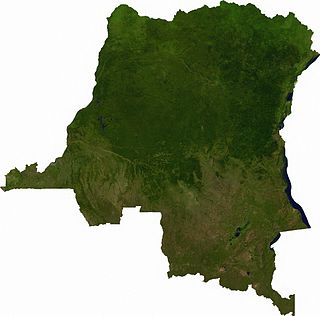
Articles related to the Democratic Republic of the Congo include:
The wildlife of Gabon is composed of its flora and fauna. Gabon is a largely low-lying country with a warm, humid climate. Much of the country is still covered by tropical rainforest and there are also grasslands, savannas, large rivers and coastal lagoons.
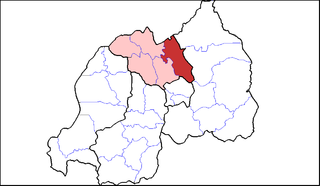
Gicumbi is a district (akarere) in Northern Province, Rwanda. Its capital is Byumba, which is also the provincial capital.

The wildlife of Togo is composed of the flora and fauna of Togo, a country in West Africa. Despite its small size the country has a diversity of habitats; there are only remnants of the once more extensive rain forests in the south, there is Sudanian Savanna in the north-western part of the country and larger areas of Guinean forest-savanna mosaic in the centre and northeast. The climate is tropical with distinct wet and dry seasons. There are estimated to be over 3000 species of vascular plant in the country, and 196 species of mammal and 676 species of bird have been recorded there.

The following outline is provided as an overview and topical guide to Gabon :

The Atlantic Equatorial coastal forests, also known as the Congolian coastal forests, are a tropical moist broadleaf forest ecoregion of central Africa, covering hills, plains, and mountains of the Atlantic coast of Cameroon, Equatorial Guinea, Gabon, Republic of the Congo, Angola, and Democratic Republic of the Congo.
The Gabonese people have forged since the independence of the country, in 1960, their own culture which is neither the traditional culture of the different ethnic groups which compose it, nor modern Western culture. It is a culture in movement, a mixture of diversity and common traits, bringing together the most diverse beliefs and practices.

Sankuru is one of the 21 new provinces of the Democratic Republic of the Congo created in the 2015 repartitioning. Sankuru, Kasaï-Oriental, and Lomami provinces are the result of the dismemberment of the former Kasaï-Oriental province. Sankuru was formed from the Sankuru District whose town of Lusambo was elevated to capital city of the new province.

The West Sudanian savanna is a tropical savanna ecoregion that extends across West Africa.

















